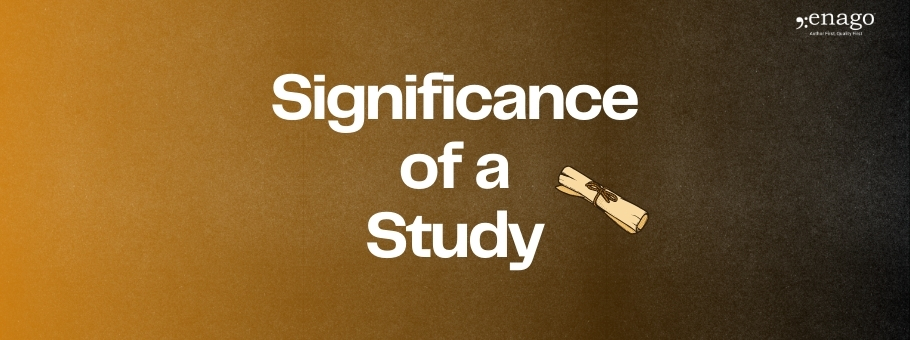How Can You Create a Well Planned Research Paper Outline

You are staring at the blank document, meaning to start writing your research paper. After months of experiments and procuring results, your PI asked you to write the paper to publish it in a reputed journal. You spoke to your peers and a few seniors and received a few tips on writing a research paper, but you still can’t plan on how to begin!
Writing a research paper is a very common issue among researchers and is often looked upon as a time consuming hurdle. Researchers usually look up to this task as an impending threat, avoiding and procrastinating until they cannot delay it anymore. Seeking advice from internet and seniors they manage to write a paper which goes in for quite a few revisions. Making researchers lose their sense of understanding with respect to their research work and findings. In this article, we would like to discuss how to create a structured research paper outline which will assist a researcher in writing their research paper effectively!
Publication is an important component of research studies in a university for academic promotion and in obtaining funding to support research. However, the primary reason is to provide the data and hypotheses to scientific community to advance the understanding in a specific domain. A scientific paper is a formal record of a research process. It documents research protocols, methods, results, conclusion, and discussion from a research hypothesis.
What Is a Research Paper Outline?
A research paper outline is a basic format for writing an academic research paper. It follows the IMRAD format (Introduction, Methods, Results, and Discussion). However, this format varies depending on the type of research manuscript. A research paper outline consists of following sections to simplify the paper for readers. These sections help researchers build an effective paper outline.
1. Title Page
The title page provides important information which helps the editors, reviewers, and readers identify the manuscript and the authors at a glance. It also provides an overview of the field of research the research paper belongs to. The title should strike a balance between precise and detailed. Other generic details include author’s given name, affiliation, keywords that will provide indexing, details of the corresponding author etc. are added to the title page.
2. Abstract
Abstract is the most important section of the manuscript and will help the researcher create a detailed research paper outline. To be more precise, an abstract is like an advertisement to the researcher’s work and it influences the editor in deciding whether to submit the manuscript to reviewers or not. Writing an abstract is a challenging task. Researchers can write an exemplary abstract by selecting the content carefully and being concise.
3. Introduction
An introduction is a background statement that provides the context and approach of the research. It describes the problem statement with the assistance of the literature study and elaborates the requirement to update the knowledge gap. It sets the research hypothesis and informs the readers about the big research question.
4. Methods
This section is usually named as “Materials and Methods”, “Experiments” or “Patients and Methods” depending upon the type of journal. This purpose provides complete information on methods used for the research. Researchers should mention clear description of materials and their use in the research work. If the methods used in research are already published, give a brief account and refer to the original publication. However, if the method used is modified from the original method, then researcher should mention the modifications done to the original protocol and validate its accuracy, precision, and repeatability.
5. Results
It is best to report results as tables and figures wherever possible. Also, avoid duplication of text and ensure that the text summarizes the findings. Report the results with appropriate descriptive statistics. Furthermore, report any unexpected events that could affect the research results, and mention complete account of observations and explanations for missing data (if any).
6. Discussion
The discussion should set the research in context, strengthen its importance and support the research hypothesis. Summarize the main results of the study in one or two paragraphs and show how they logically fit in an overall scheme of studies. Compare the results with other investigations in the field of research and explain the differences.
7. Acknowledgments
Acknowledgements identify and thank the contributors to the study, who are not under the criteria of co-authors. It also includes the recognition of funding agency and universities that award scholarships or fellowships to researchers.
8. Declaration of Competing Interests
Finally, declaring the competing interests is essential to abide by ethical norms of unique research publishing. Competing interests arise when the author has more than one role that may lead to a situation where there is a conflict of interest.
Steps to Write a Research Paper Outline
- Write down all important ideas that occur to you concerning the research paper.
- Answer questions such as – what is the topic of my paper? Why is the topic important? How to formulate the hypothesis? What are the major findings?
- Add context and structure. Group all your ideas into sections – Introduction, Methods, Results, and Discussion/Conclusion.
- Add relevant questions to each section. It is important to note down the questions. This will help you align your thoughts.
- Expand the ideas based on the questions created in the paper outline.
- After creating a detailed outline, discuss it with your mentors and peers.
- Get enough feedback and decide on the journal you will submit to.
- The process of real writing begins.
Benefits of Creating a Research Paper Outline
As discussed, the research paper subheadings create an outline of what different aspects of research needs elaboration. This provides subtopics on which the researchers brainstorm and reach a conclusion to write. A research paper outline organizes the researcher’s thoughts and gives a clear picture of how to formulate the research protocols and results. It not only helps the researcher to understand the flow of information but also provides relation between the ideas.
A research paper outline helps researcher achieve a smooth transition between topics and ensures that no research point is forgotten. Furthermore, it allows the reader to easily navigate through the research paper and provides a better understanding of the research. The paper outline allows the readers to find relevant information and quotes from different part of the paper.
Research Paper Outline Template
A research paper outline template can help you understand the concept of creating a well planned research paper before beginning to write and walk through your journey of research publishing.
1. Research Title
2. Abstract
3. Introduction
A. Background
i. Support with evidence
ii. Support with existing literature studies
B. Thesis Statement
i. Link literature with hypothesis
ii. Support with evidence
iii. Explain the knowledge gap and how this research will help build the gap
4. Body
A. Methods
i. Mention materials and protocols used in research
ii. Support with evidence
B. Results
i. Support with tables and figures
ii. Mention appropriate descriptive statistics
C. Discussion
i. Support the research with context
ii. Support the research hypothesis
iii. Compare the results with other investigations in field of research
D. Conclusion
i. Support the discussion and research investigation
ii. Support with literature studies
E. Acknowledgements
i. Identify and thank the contributors
ii. Include the funding agency, if any
F. Declaration of Competing Interests
5. References
Download the Research Paper Outline Template!
Have you tried writing a research paper outline? How did it work for you? Did it help you achieve your research paper writing goal? Do let us know about your experience in the comments below.










Downloadable format shared which is great. 🙂
slay